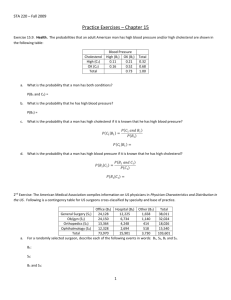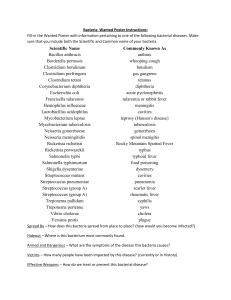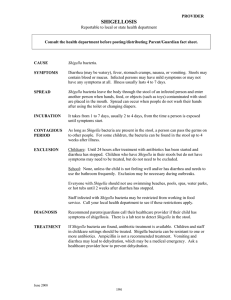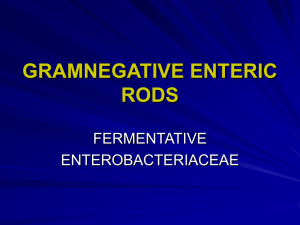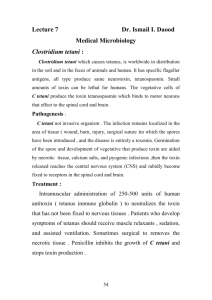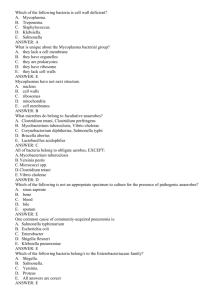SECTION 2 — Microbial Hazards PRACTICE TEST QUESTIONS
advertisement
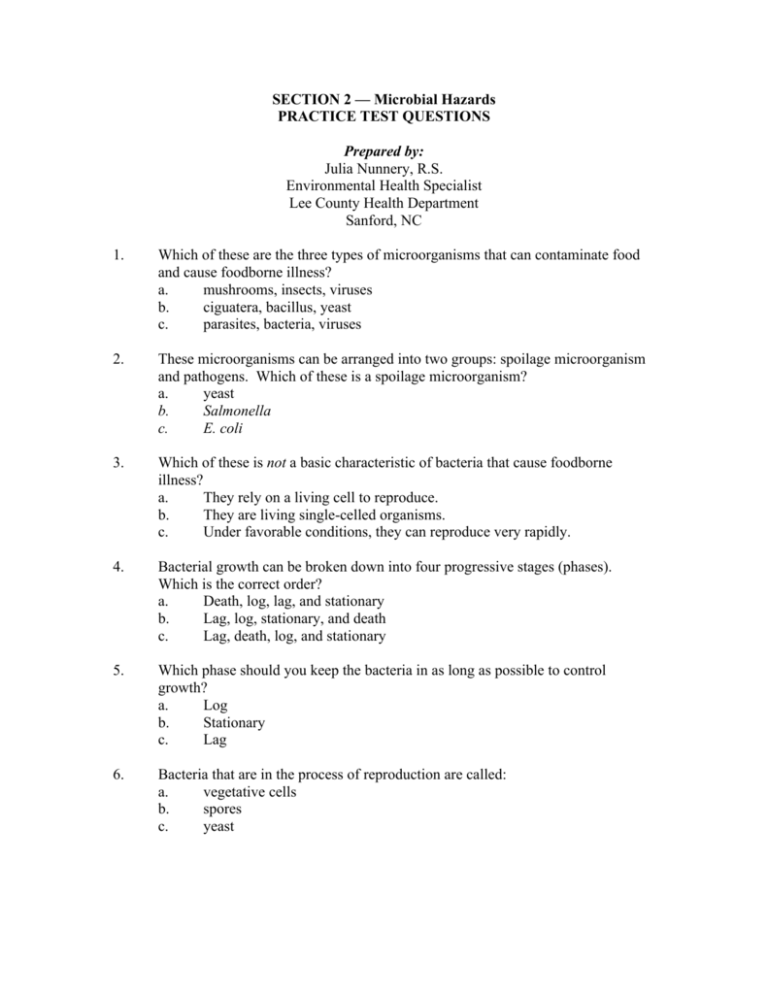
SECTION 2 — Microbial Hazards PRACTICE TEST QUESTIONS Prepared by: Julia Nunnery, R.S. Environmental Health Specialist Lee County Health Department Sanford, NC 1. Which of these are the three types of microorganisms that can contaminate food and cause foodborne illness? a. mushrooms, insects, viruses b. ciguatera, bacillus, yeast c. parasites, bacteria, viruses 2. These microorganisms can be arranged into two groups: spoilage microorganism and pathogens. Which of these is a spoilage microorganism? a. yeast b. Salmonella c. E. coli 3. Which of these is not a basic characteristic of bacteria that cause foodborne illness? a. They rely on a living cell to reproduce. b. They are living single-celled organisms. c. Under favorable conditions, they can reproduce very rapidly. 4. Bacterial growth can be broken down into four progressive stages (phases). Which is the correct order? a. Death, log, lag, and stationary b. Lag, log, stationary, and death c. Lag, death, log, and stationary 5. Which phase should you keep the bacteria in as long as possible to control growth? a. Log b. Stationary c. Lag 6. Bacteria that are in the process of reproduction are called: a. vegetative cells b. spores c. yeast 7. Just as many bacteria are growing as are dying in which phase? a. Stationary phase b. Lag c. Log 8. At 42°F, Salmonella doesn’t grow at all, but it doesn’t die either. This is using refrigeration to prolong which phase? a. Death b. Log c. Lag 9. Some bacteria can change into spores for protection against unfavorable conditions such as temperature extremes, high acidity, and low moisture. Which of these does not form spores? a. Bacillus b. Clostridium c. E coli 10. Pathogenic bacteria grow well in foods with a pH between a. 4.6 – 7.5 b. 2.3 – 4.5 c. 8.6 – 9.5 11. Which best describes the temperature danger zone? a. 120°F - 165°F b. 41°F - 140° c. 32°F - 55ºF 12. Which of these bacterial duos grow well at refrigeration temperatures? a. Listeria and Yersinia b. Shigella and Clostridium c. Bacillus and Shigella 13. Most microorganisms that cause foodborne illness can grow with (aerobic) or without (anaerobic) the presence of oxygen. Which of these is anaerobic? a. Clostridium b. Salmonella c. Shigella 14. The amount of moisture in a food is called its water activity. Potentially hazardous foods typically have a water activity of: a. 4.6 – 7.5 b. 0.85 – 1.0 c. 40 – 140 15. All of these bacteria are known to survive pH values below 4.5 except for: a. Salmonella b. Staphylococcus c. Shigella d. E. coli 16. Mr. Igit dumped his sauteed onions and leftover baked potatoes into a pot of stew he made yesterday. He warmed it and left it on the stove overnight. Which bacteria is probably responsible for Mr. Igit’s demise? a. Campylobacter jejuni b. Clostridium botulinum c. Listeria moncytogenes 17. Several hours after eating breakfast at the school cafeteria, 78 students were diagnosed with Salmonellas. Which of these practices probably contributed to the illness? a. b. c. 18. buying shellfish from an unapproved source pooling eggs use of home-canned products Which is NOT true of viruses? a. b. c. type of illness is an infection found in human intestinal tract and contaminated water reproduce every 20 minutes in potentially hazardous food 19. Which virus is typically not associated with shellfish? a. Hepatitis A d. Norwalk d. Rotavirus 20. Which virus is the leading cause of severe gastroenteritis among infants and young children worldwide? a. Hepatitis A b. Norwalk c. Rotavirus 21. Some roundworms and protozoans are classed as parasites. Which of these is not a roundworm? a. Toxoplasma gondii b. Anisakis simplex c. Trichinella spiralis 22. All the parasites can cause an infection. Which of these is associated with bottom feeding marine fish? a. Anisakis b. Toxoplasma c. Giardia 23. The mold Aspergillus produces a toxin called: a. Ciguatera b. Aflatoxin c. Botulism 24. Boo-Boo scratched his nose, coughed, and then prepared ham sandwiches and pastries without washing his hands. Which bacteria is responsible for the illness that affected 24 people an hour after lunch? a. Campylobacter jejuni b. Vibrio vulnificus c. Staphylococcus aureus 25. Which of these causes an infection? a. Campylobacter jejuni b. Stapylococcus aureus c. Clostridium botulinum 26. After a meal of Red Snapper, Lu-Lu had hot and cold flashes, temporary blindness, and hallucinations. She was probably a victim of: a. Ciguatera b. Yersinia c. Cryptosporidium 27. Scombroid posioning is associated with which toxin? a. Botulism b. Histamine c. E. coli 28. Some fish toxins are systemic, meaning they occur as a natural part of the fish. An example is: a. Puffer fish b. Flounder c. Amberjack 29. Which toxin is a direct result of time-temperature abuse? a. Systemic b. Ciguatera c. Scombroid 30. Sulfites are found in many dried and preserved fruits and vegetables. Nitrites are preservatives typically used in a. grains b. spices c. meat products SECTION 2 — Microbial Hazards PRACTICE TEST QUESTIONS ANSWER KEY 1-c 2-a 11-b 3-a 4-b 5-c 6-a 7-a 8-c 9-c 10-a 12-a 13-a 14-b 15c 16-b 17-b 18-c 19-c 20-c 21-a 22-a 23-b 24-c 25-a 26-a 27-b 28-a 29-c 30-c


